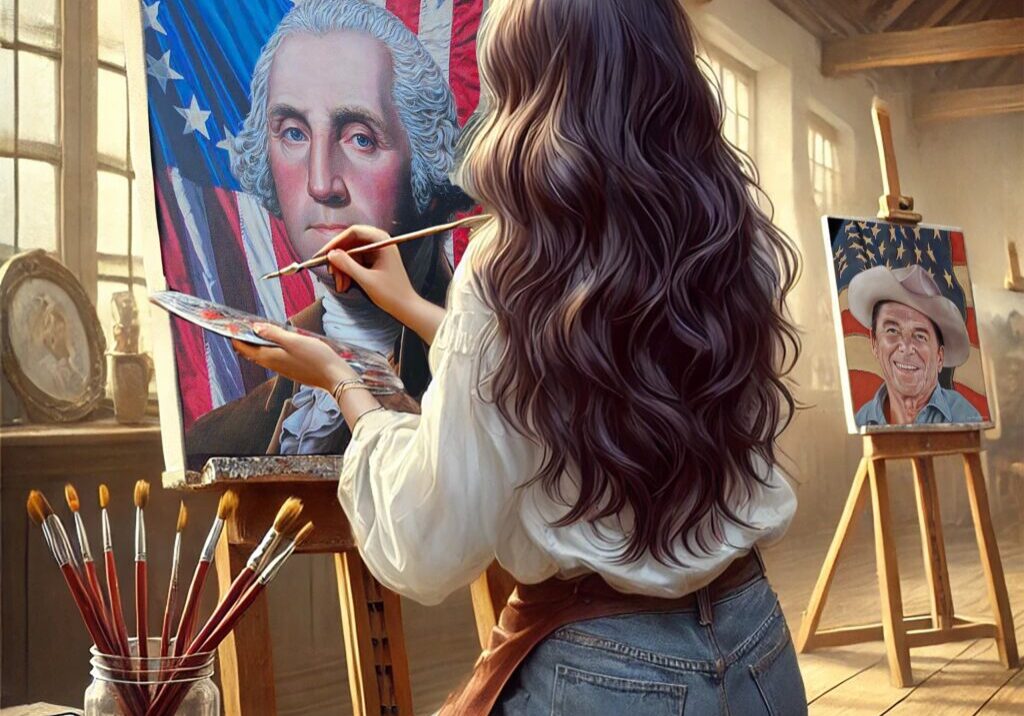
Art Behind the Mural: How Print Carried the Cause Before the War Was Won
Before treaties were signed and borders drawn, the American Revolution traveled by ink. It moved not by ship or horse alone, but by paper – etched, pressed, printed, and passed hand to hand. Pamphlets, broadsides, handbills, and even engraved portraits created an invisible infrastructure of belief. Before bullets ever defined the outcome, the cause was carried – and shaped – by artful print. In a time when illiteracy was common and printing was slow, these documents had to do more than inform. They had to persuade. And that meant they had to be designed. Typography choices weren’t just aesthetic; they carried tone. Italicized headlines screamed urgency. Centered spacing created gravitas. Woodblock illustrations were often crude, but effective – they cut directly into the imagination. The revolution needed not just arguments, but images people could carry in their minds and repeat at taverns. The mural’s Unity and Freedom sections echo this early visual campaign. A fluttering pamphlet here, a bold proclamation there – they’re not background. They’re narrative anchors. Each one represents a link in the chain of communication that bound thirteen colonies into a single cause. The fact that these items are scattered, half-legible, wind-tossed in the mural is deliberate. Print in those years was ephemeral. But its message outlived its materials. Take Common Sense – Thomas Paine’s slim, stark pamphlet. No florid design. No illustrations. Just a radical message laid out in plain type, in language designed to stir laborers and landowners alike. It was art by way of restraint. Its layout mirrored a sermon, but its purpose was political fire. When you see a folded page in the mural, gently lit but weathered, it might as well be one of Paine’s own – a nod to the power of design with intent. The art of print wasn’t limited to words. Revere’s engravings, even when inaccurate, were masterclasses in symbolic compression. In one image, a crowd becomes a mob, a soldier becomes a murderer, and blood becomes argument. These visual shortcuts weren’t crude – they were strategic. They shaped memory as much as history. Even subscription lists and meeting announcements – items we might now dismiss as bureaucratic – were crafted with care. Ornate borders gave importance. Heavy fonts lent weight. To the modern eye, these documents might appear decorative, but in context, their design was a kind of visual credibility. A cause written beautifully felt more legitimate, more worthy of belief. The mural doesn’t elevate one single printer, or one single press. It honors the ecosystem. Look closely, and you’ll see layers: pages nailed to wood, curled and forgotten; pamphlets flying past soldiers; announcements half-obscured by smoke. This is not clutter. This is communication in motion. Print carried the cause – not just with ideas, but with visual rhythm. It was repetitive, emotional, and designed to be read aloud, posted in public, and imprinted on memory. That’s what the mural captures – not just the facts, but the feel of those documents. The press was the heartbeat of the revolution, and its cadence was set by artists who knew exactly what a page could do. So before the war was won on the battlefield, it was fought in print. And in that print, there was art. Not the art of quiet contemplation, but of firelight and urgency. The art of shaping a nation before there was one.

